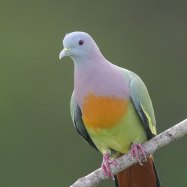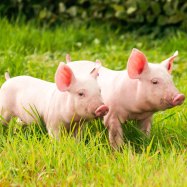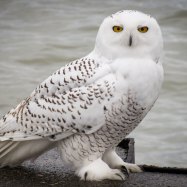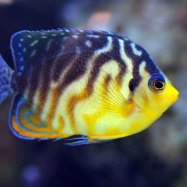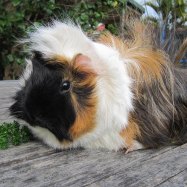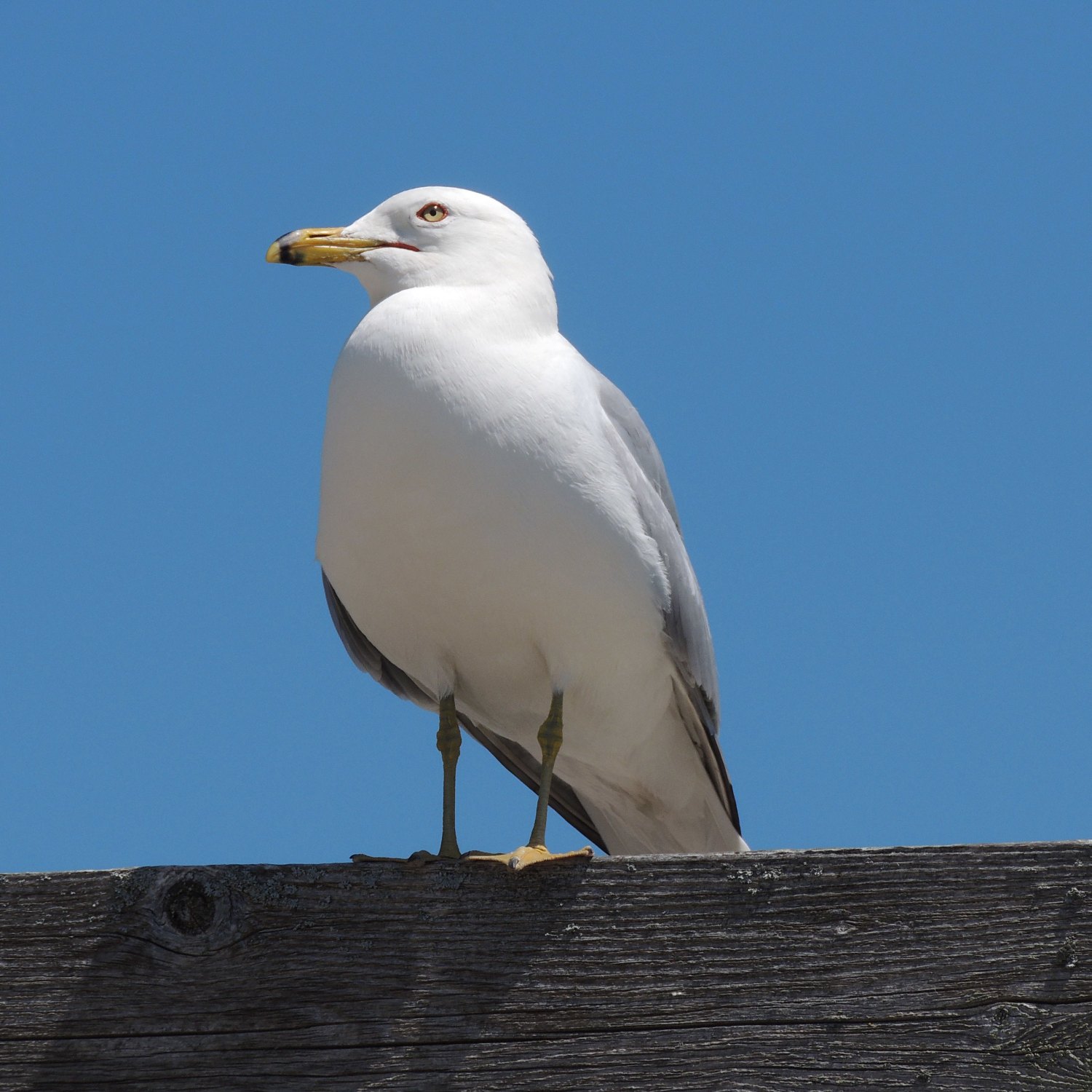
Ring Billed Gull
17-21 inches
Did you know that the Ring Billed Gull, a medium-sized seabird with a compact body and short legs, can be found all across North America? With its distinctive black ring on its yellow bill, this gull is a common sight near bodies of water and is known for its graceful flight and scavenging abilities. Keep an eye out for this beautiful bird the next time you're near a lake or coastal area. #RingBilledGull #NorthAmerica #Seabird #Laridae
Animal Details Summary:
Common Name: Ring Billed Gull
Kingdom: Animalia
Habitat: Coasts, lakes, rivers, and landfills
The Majestic Ring-Billed Gull: A Graceful Seabird of North America
In the coastal regions of North America, one can often see a graceful bird gliding through the skies, with elegant white feathers and vibrant yellow beak. This bird is the ring-billed gull, also known as Larus delawarensis in the scientific community.Ring-billed gulls belong to the animal kingdom, class Aves, and order Charadriiformes. They are a common species of seabird, belonging to the Laridae family Ring Billed Gull. These beautiful creatures can be found in diverse habitats such as coasts, lakes, rivers, and even landfills.
Their feeding method is omnivorous, meaning they consume both plants and animals. These gulls are intelligent and opportunistic, adapting their diet to the available food sources in their environment. They have a varied diet, consisting of fish, insects, small mammals, and also grains and fruits.
The geographical distribution of ring-billed gulls is mainly restricted to North and Central America. However, they are also found in regions of South America, Europe, and even Asia during their winter migration. The United States is their country of origin, and they are widely distributed throughout North America.
Despite their widespread distribution, ring-billed gulls are classified as a low concern species by the International Union for Conservation of Nature (IUCN). However, like many other species of birds, they are affected by environmental factors such as habitat loss and pollution Rhesus Macaque.
Appearance and Body Features
One of the most striking features of this seabird is its plumage or body coloration. Ring-billed gulls have a predominantly white body with gray wings, giving them a sleek and clean appearance. Their primary feathers, which are the largest feathers at the end of their wings, are black, creating a beautiful contrast against their white body.Their name, "ring-billed," comes from the signature black ring around their yellow beaks. This feature is more prominent in adults, and it becomes darker during breeding season to attract mates. The bright yellow color of their beak serves as a signal for mating and is also used for communication.
The yellow color is also reflected in their legs, which are long and sturdy, serving as a useful tool for wading and swimming. Their body shape is medium-sized, with a compact and streamlined body that allows for easy navigation through the air and water. Ring-billed gulls have short legs and a wingspan of 48-61 inches, making them agile and efficient flyers.
According to experts, these graceful birds have an average length of 17-21 inches, with males being slightly larger than females. They have a similarity in appearance to other gull species, such as herring gulls, but can be distinguished by the black ring on their beaks.
Habitat and Behavior
Ring-billed gulls are adaptable creatures, capable of thriving in various types of habitats. They prefer coastal regions but can also be found in freshwater ecosystems like lakes and rivers. They also frequent landfills, where they can scavenge for food.These gulls live in colonies, with some groups being as large as 20,000 individuals. They are social birds that rely on each other for protection and survival. They are also highly vocal, using various calls and sounds to communicate with each other.
Another interesting behavior of ring-billed gulls is their intelligence. Studies have shown that they possess problem-solving skills, with the ability to use tools to access food. They are also quick learners and can adapt quickly to changes in their environment.
During breeding season, males compete for the attention of females by displaying a variety of behaviors, including performing aerial displays and making loud calls. Once a pair has been formed, they will build a nest together on the ground, lined with twigs, grass, and feathers.
Conservation Efforts
With their wide distribution and adaptability, ring-billed gulls are not facing any threats to their population. In fact, they are considered an agricultural pest due to their habit of stealing grain from farm fields. In some areas, they are actively discouraged from building their colonies to minimize damage to crops.However, like many other bird species, they are sensitive to changes in their environment caused by human activities. Pollution, habitat destruction, and climate change can have a significant impact on their breeding success and overall survival.
To protect these birds and their habitats, conservation efforts such as regular monitoring, habitat management, and public education are crucial. Many organizations also have set up conservation programs to protect the ring-billed gull and other bird species.
In Conclusion
The ring-billed gull is a magnificent seabird, with its striking appearance and adaptable nature. They play an essential role in their ecosystems, helping to control insect populations and maintaining balance in their natural habitats.As humans, it is our responsibility to ensure their continued survival by taking care of their environment. By reducing pollution and protecting their habitats, we can help these beautiful birds thrive for generations to come. So the next time you see a ring-billed gull flying above you, take a moment to appreciate its beauty and the important role it plays in our world.

Ring Billed Gull
Animal Details Ring Billed Gull - Scientific Name: Larus delawarensis
- Category: Animals R
- Scientific Name: Larus delawarensis
- Common Name: Ring Billed Gull
- Kingdom: Animalia
- Phylum: Chordata
- Class: Aves
- Order: Charadriiformes
- Family: Laridae
- Habitat: Coasts, lakes, rivers, and landfills
- Feeding Method: Omnivorous
- Geographical Distribution: North and Central America
- Country of Origin: United States
- Location: Widely distributed in North America
- Animal Coloration: White body, gray wings, black primary feathers, yellow legs, and a yellow bill with a black ring
- Body Shape: Medium-sized seabird with a compact body, short legs, and wingspan of 48-61 inches
- Length: 17-21 inches
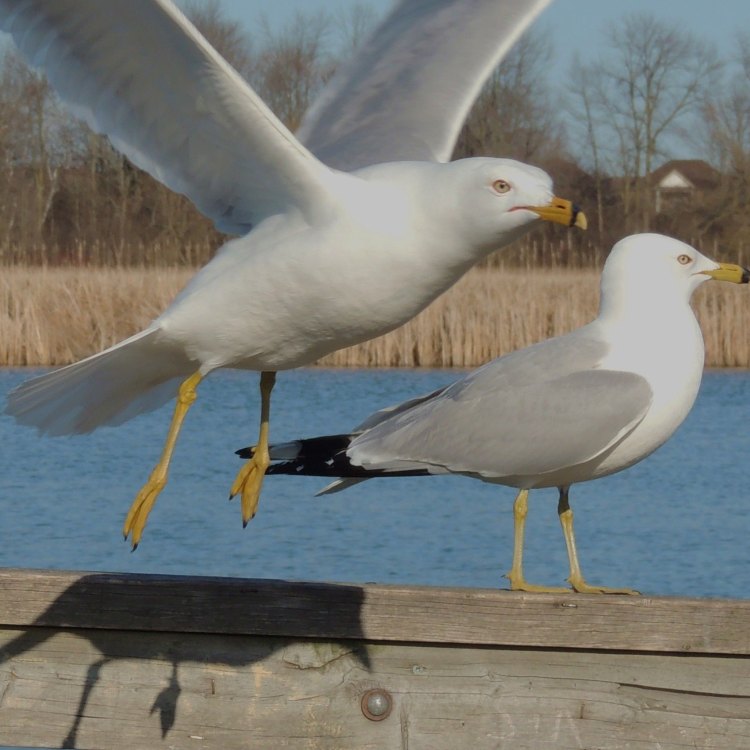
Ring Billed Gull
- Adult Size: Medium
- Average Lifespan: 10-15 years
- Reproduction: They are monogamous and form pair bonds
- Reproductive Behavior: They build nests on the ground or on flat rooftops
- Sound or Call: Loud, nasal 'kree-ar' or 'gah'
- Migration Pattern: Migratory, with populations moving south for the winter
- Social Groups: Live in colonies and are highly social
- Behavior: They are opportunistic feeders and often scavenge for food
- Threats: Habitat loss, pollution, hunting, predation, and disturbance from humans
- Conservation Status: Least Concern
- Impact on Ecosystem: They play a role in controlling populations of small fish and invertebrates
- Human Use: They are sometimes used as indicators of environmental health
- Distinctive Features: Distinctive black ring around the bill
- Interesting Facts: They have a wide range of vocalizations
- Predator: Predators include larger birds and mammals
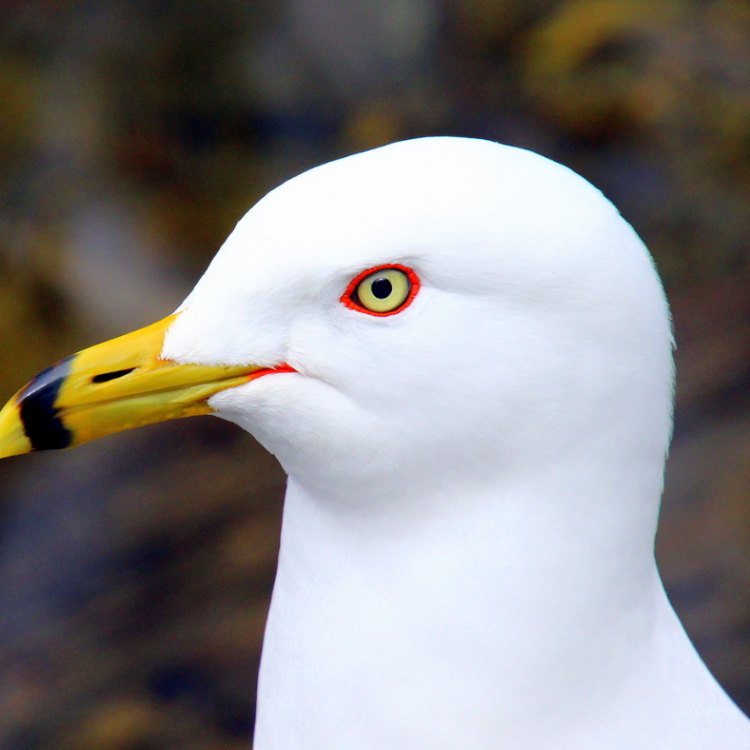
Larus delawarensis
The Unique Features of the Ring Billed Gull: From the Skies to the Ecosystem
The Ring Billed Gull, also known as Larus delawarensis, is a medium-sized shorebird that can be found along the coasts and inland waters of North America. With an average lifespan of 10-15 years, this bird has become a common sight in many coastal cities, both in its natural habitat and in urban areas. But what makes this bird so unique? In this article, we will delve into the distinctive features and behavior of the Ring Billed Gull and how it impacts its ecosystem.Size and Reproduction
Measuring approximately 18-24 inches in length and weighing between 500-700 grams, the Ring Billed Gull falls under the category of medium-sized birds PeaceOfAnimals.Com. However, don't let its size fool you; these gulls have a strong and powerful wing structure, allowing them to maneuver gracefully in the air. They are also known for their distinctive black ring around their yellowish bill, giving them their common name.When it comes to reproduction, these gulls are monogamous and form pair bonds that can last for several breeding seasons. They typically start breeding at around three years of age and will remain with the same mate for life. This behavior has led to the formation of large colonies where they nest and raise their young.
Reproductive Behavior and Calls
Speaking of nesting, Ring Billed Gulls have a unique reproductive behavior. They are opportunistic nesters and will build their nests on the ground or on flat rooftops. This nesting behavior has led to an increase in their population in urban areas, as they have adapted to the changing landscape. However, their nests are vulnerable to predators, such as larger birds and mammals, and human disturbance Red Ackie Monitor.While these gulls are not known to be particularly vocal, they do have a variety of vocalizations. Their most common call is a loud, nasal 'kree-ar' or 'gah,' often heard when they are in flight. They also have a more aggressive call when defending their territories. Aside from vocalizations, they also have a distinct head-bobbing behavior, especially during courtship displays.
Migration and Social Groups
The Ring Billed Gull is a migratory bird, with populations moving south for the winter. They can be found along the coastal areas of the United States, Mexico, and Central America during this time. Upon their return to their breeding grounds in the spring, they form large colonies and are highly social birds. This social nature allows them to work together to protect their nests and young from potential predators.Behavior and Threats
When it comes to feeding, Ring Billed Gulls are opportunistic and adaptable. They are known for their skills in catching fish, but they are also avid scavengers. They can often be seen feeding on scraps in landfills, and even stealing food from other birds.Unfortunately, these gulls face various threats that can impact their population. The primary threats include habitat loss, pollution, hunting, predation, and disturbance from humans. Many coastal cities have seen an increase in human disturbance, leading to the displacement of colonies and disruption in their behavior. These threats have resulted in the Ring Billed Gull being listed as Least Concern on the IUCN Red List.
Impact on Ecosystem and Human Use
Despite their nuisance behavior in urban areas, the Ring Billed Gull plays a vital role in controlling populations of small fish and invertebrates. As opportunistic feeders, they help keep these populations in check, preventing an imbalance in the ecosystem. They also serve as indicators of environmental health, as their presence can signify a healthy ecosystem. Any decline in their population can indicate potential environmental issues that need to be addressed.Interesting Facts
Aside from their distinct black ring around their bill and a wide range of vocalizations, there are several other interesting facts about the Ring Billed Gull. For instance, they have been observed using tools to catch fish, an intelligence that is not commonly seen in birds. They are also known to mimic the calls of other birds, adding to their repertoire of vocalizations.In Conclusion
In conclusion, the Ring Billed Gull is a unique and adaptable bird that has made its mark in both natural and urban ecosystems. Their distinctive features, reproductive behavior, and impact on the ecosystem make them a fascinating species to study. While they may face various threats, their population remains stable, and it is essential to continue monitoring and protecting these birds to maintain a healthy balance in the environment. So next time you spot a Ring Billed Gull soaring in the sky, take a moment to appreciate their unique features and the important role they play in our world.

The Majestic Ring-Billed Gull: A Graceful Seabird of North America
Disclaimer: The content provided is for informational purposes only. We cannot guarantee the accuracy of the information on this page 100%. All information provided here may change without prior notice.

